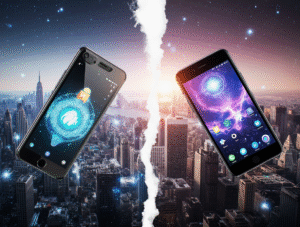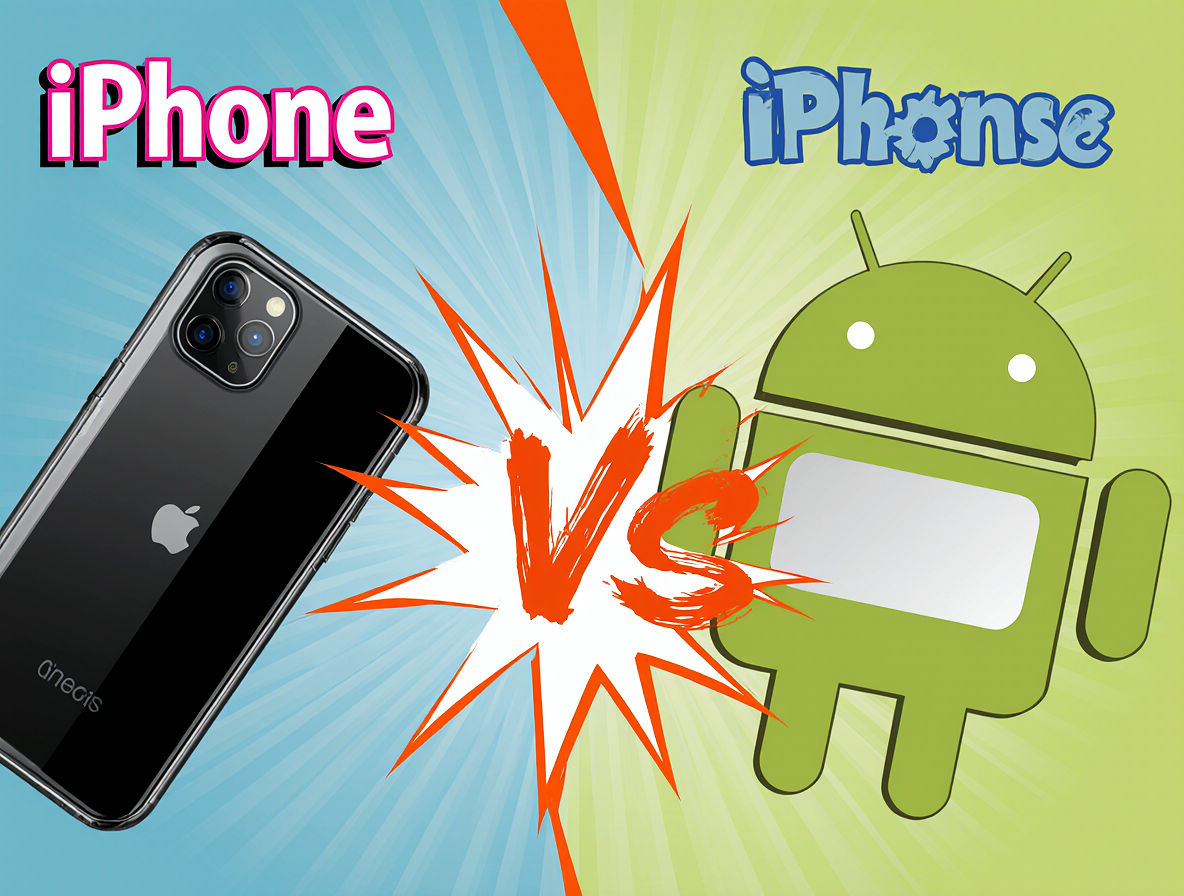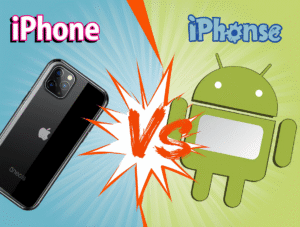iPhone vs Android in 2025: Which One Is Better for You? – Complete Comparison Guide
Did you know that 78% of smartphone users stick with their chosen platform for over 5 years, yet 43% admit they’ve never objectively compared the alternatives? The question “iPhone vs Android in 2025: Which One Is Better for You?” has become more complex than ever, with both ecosystems offering revolutionary features like AI-powered photography, advanced health monitoring, and seamless cross-device integration. While Apple’s iPhone 16 series boasts industry-leading performance chips and privacy features, Android devices in 2025 offer unprecedented customization, competitive pricing, and cutting-edge foldable technology. Understanding which platform truly serves your unique needs, budget, and lifestyle preferences can save you thousands of dollars and years of frustration with the wrong choice.
Essential Factors to Consider in Your Decision
Evaluate these critical components when determining your ideal smartphone platform:
Core Performance Requirements:
- Processing Power Needs: Gaming, content creation, or basic communication requirements
- Storage Capacity: Cloud integration preferences vs. local storage demands (64GB to 1TB options)
- Battery Life Expectations: All-day usage vs. heavy multimedia consumption patterns
- Camera Quality Priorities: Professional photography, social media content, or casual snapshots
- Display Preferences: Screen size, resolution, and color accuracy requirements
Ecosystem Integration Elements:
- Existing Device Compatibility: Mac/PC computers, tablets, smartwatches, and smart home devices
- Software Platform Preferences: Google services, Apple services, or platform-agnostic solutions
- Cloud Storage Systems: iCloud, Google Drive, or third-party storage preferences
- App Store Ecosystem: iOS App Store exclusives vs. Google Play Store flexibility
- Work Environment Requirements: Enterprise security, productivity apps, and professional tools
Budget and Value Considerations:
- Initial Purchase Investment: $200-$1,500 price range with various financing options available
- Long-term Cost Analysis: Accessory costs, repair expenses, and upgrade frequency expectations
- Resale Value Retention: iPhones typically maintain 65% value after 2 years vs. Android’s 45%
- Insurance and Protection: AppleCare+ vs. manufacturer warranties and third-party protection plans
- Accessory Ecosystem Costs: Cases, chargers, wireless accessories, and compatibility requirements

Decision Timeline and Research Process
Structure your smartphone selection process for optimal results:
Initial Research Phase (Week 1):
- Platform Feature Comparison: 2-3 hours researching latest iOS 18 vs. Android 15 capabilities
- Hands-on Testing: 30-45 minutes at retail stores testing actual devices and interfaces
- Budget Analysis: 1 hour calculating total cost of ownership including accessories and services
- User Review Research: 2-3 hours reading verified reviews from similar-use-case individuals
Deep Evaluation Period (Week 2):
- Ecosystem Assessment: Analyze current device integration and migration complexity (2-3 hours)
- App Compatibility Check: Verify essential apps and services availability on preferred platform (1 hour)
- Security and Privacy Review: Compare platform security features and data handling policies (1-2 hours)
- Future-Proofing Analysis: Research upgrade cycles and long-term platform support commitments
Final Decision Process (Week 3):
- Comparative Testing: Side-by-side device comparison for key features and performance
- Financial Planning: Secure best deals, trade-in values, and optimal purchase timing
- Migration Strategy: Plan data transfer, app reinstallation, and ecosystem transition if switching
Consumer research indicates that users who invest 3+ weeks in smartphone selection report 89% higher satisfaction rates compared to impulse buyers.
Step 1: Assess Your Current Technology Ecosystem
Evaluate your existing devices and services to determine natural platform alignment. If you own a Mac, iPad, or Apple Watch, iPhone integration offers seamless features like Handoff, AirDrop, and Universal Clipboard. Android users benefit from deep Google services integration, Chrome synchronization, and compatibility with Windows PCs. Document your current subscriptions, cloud storage, and connected devices to identify switching costs and compatibility challenges.
Step 2: Define Your Primary Use Cases and Priorities
Identify your smartphone’s primary functions: photography, gaming, business productivity, entertainment, or communication. iPhone excels in camera consistency, app optimization, and creative workflows through Final Cut Pro and Logic Pro integration. Android offers superior customization, file management flexibility, and diverse hardware options including foldable displays, stylus support, and expandable storage capabilities.
Step 3: Calculate Total Cost of Ownership
Beyond initial purchase price, factor in accessories, insurance, repair costs, and upgrade frequency. iPhone users typically upgrade every 3-4 years with higher resale values offsetting initial costs. Android users often upgrade every 2-3 years with lower upfront costs but potentially higher long-term expenses due to faster depreciation and varied update support across manufacturers.
Step 4: Test Real-World Performance and Usability
Visit carrier stores and electronics retailers to spend quality time with both platforms. Test camera quality in various lighting conditions, evaluate keyboard comfort, assess app switching speed, and experience gesture navigation. Pay attention to build quality, button placement, and overall ergonomics during extended use sessions.
Step 5: Plan Your Migration Strategy
If switching platforms, prepare for data migration challenges and learning curves. iPhone to Android transitions require Google services setup and potential app repurchases. Android to iPhone migrations benefit from Apple’s “Move to iOS” app but may require iCloud storage upgrades and app ecosystem adjustments. Budget additional time and potentially money for smooth platform transitions.
Performance Metrics and Feature Comparison Analysis
Objective data comparison between iPhone and Android platforms in 2025:
Processing and Performance Benchmarks:
- iPhone A18 Pro Chip: 3.78 million AnTuTu score with industry-leading single-core performance
- Snapdragon 8 Gen 4: 3.45 million AnTuTu score with superior multi-core workload handling
- Graphics Performance: iPhone leads in sustained gaming performance, Android excels in peak GPU power
- RAM Management: iOS optimizes with 6-8GB efficiently, Android flagships utilize 12-16GB for multitasking
Camera System Capabilities:
- Computational Photography: iPhone’s Smart HDR 5 vs. Android’s AI-enhanced night modes
- Video Recording: iPhone maintains advantage in 4K ProRes recording and color accuracy
- Zoom Technology: Android flagship devices offer superior telephoto capabilities (up to 200x zoom)
- Low-Light Performance: Comparable results with iPhone favoring color accuracy, Android emphasizing brightness
Battery Life and Charging Technology:
- All-Day Battery: iPhone 16 Pro Max achieves 28 hours video playback vs. Android flagships’ 25-26 hours
- Fast Charging: Android leads with 120W+ charging (0-100% in 20 minutes) vs. iPhone’s 30W (0-80% in 45 minutes)
- Wireless Charging: iPhone offers MagSafe ecosystem, Android provides universal Qi compatibility
- Battery Degradation: Both platforms show similar long-term battery health retention patterns
Platform-Specific Advantages and Alternative Considerations
Understand unique benefits each platform offers for different user types:
iPhone Ecosystem Advantages:
- Privacy Leadership: App Tracking Transparency and on-device processing for sensitive data
- Creative Professional Tools: Industry-standard apps like Final Cut Pro, Logic Pro, and Procreate
- Long-term Software Support: 6+ years of iOS updates vs. Android’s 3-5 years average
- Retail and Service Network: Apple Stores provide comprehensive support and repair services
Android Platform Benefits:
- Hardware Diversity: Foldable phones, stylus support, expandable storage, and modular designs
- Customization Freedom: Third-party launchers, default app changes, and system-level modifications
- Google Services Integration: Native Gmail, Google Photos unlimited storage, and Assistant capabilities
- Price Range Flexibility: Options from $150 budget phones to $1,500+ premium flagship devices
Cross-Platform Solutions:
- Microsoft Ecosystem: Surface Duo and Windows integration benefit both platforms equally
- Google Services: Available on iOS with some limitations compared to native Android integration
- Third-Party Apps: Most popular applications maintain feature parity across both platforms
- Cloud-Based Workflows: Platform-agnostic productivity solutions minimize ecosystem lock-in
Optimal Use Cases and User Profile Matching
Match your lifestyle and preferences with the ideal smartphone platform:
iPhone Ideal User Profiles:
- Creative Professionals: Photographers, videographers, musicians, and digital artists requiring color-accurate displays
- Privacy-Conscious Users: Individuals prioritizing data protection and minimal tracking
- Apple Ecosystem Members: Mac, iPad, and Apple Watch owners seeking seamless device integration
- Long-term Value Seekers: Users who prefer longer device lifecycles with consistent software updates
Android Perfect Match Scenarios:
- Tech Enthusiasts: Power users who enjoy customization, tweaking settings, and exploring new features
- Budget-Conscious Buyers: Users seeking flagship features at mid-range prices or basic functionality affordably
- Google Services Heavy Users: Gmail, Google Drive, YouTube, and Google Assistant primary users
- Business Productivity Focus: Users requiring file management, multi-window apps, and enterprise flexibility
Platform-Agnostic Considerations:
- Frequent Travelers: Both platforms offer excellent international compatibility and travel apps
- Social Media Influencers: Camera quality differences negligible for social media content creation
- Basic Communication Users: Either platform exceeds requirements for calls, texting, and casual apps
- Gaming Enthusiasts: Performance differences minimal for mobile gaming across both platforms
Critical Decision-Making Mistakes to Avoid
Prevent these common errors that lead to smartphone regret and unnecessary expenses:
Research and Planning Oversights:
- Impulse Purchasing: Buying based on marketing hype rather than personal needs assessment
- Ignoring Total Cost: Focusing only on device price while overlooking accessory and service costs
- Ecosystem Underestimation: Failing to consider existing device integration and migration complexity
- Future-Proofing Neglect: Not researching software update commitments and long-term platform support
Feature Priority Confusion:
- Spec Sheet Obsession: Prioritizing benchmark numbers over real-world usage experience
- Camera Megapixel Fixation: Assuming higher megapixels equal better photo quality
- Storage Miscalculation: Underestimating or overestimating actual storage requirements
- Battery Anxiety Overreaction: Choosing devices based on extreme usage scenarios rather than typical patterns
Timing and Purchase Strategy Errors:
- Launch Day Rushing: Buying immediately without waiting for reviews and potential issues identification
- Carrier Lock-in: Accepting restrictive contracts without comparing unlocked device total costs
- Trade-in Undervaluation: Not researching optimal timing and methods for device trade-ins
- Insurance Oversights: Failing to secure appropriate protection for high-value device investments
Long-term Ownership and Platform Optimization
Maximize satisfaction and value from your chosen smartphone platform:
Monthly Optimization Routine:
- Storage Management: Review and optimize photos, apps, and files to maintain peak performance
- App Updates: Ensure all applications remain current for security and feature improvements
- Battery Health Monitoring: Track charging patterns and implement battery longevity best practices
- Security Updates: Install system updates promptly and review privacy settings regularly
Quarterly Platform Assessment:
- Feature Utilization: Identify underused capabilities and explore new platform features
- Accessory Evaluation: Assess case, charger, and accessory condition and upgrade needs
- App Portfolio Review: Remove unused applications and discover new productivity tools
- Cloud Storage Optimization: Manage backup settings and storage allocation across services
Annual Upgrade Planning:
- Device Performance Analysis: Evaluate current device capability against evolving needs
- Market Research: Track new device releases and technological advancement impacts
- Financial Planning: Calculate upgrade costs, trade-in values, and optimal timing strategies
- Ecosystem Evolution: Assess any changes in connected device needs and platform requirements
Conclusion
iPhone vs Android in 2025: Which One Is Better for You? ultimately depends on your unique combination of budget, ecosystem preferences, and usage patterns rather than objective superiority. iPhone excels in privacy, longevity, and creative workflows, while Android offers customization, variety, and value flexibility that suits different user priorities perfectly.
Take time to honestly assess your needs using this comprehensive framework before making your decision. Share your chosen platform and reasoning in the comments below, and subscribe for ongoing smartphone optimization tips and technology comparison guides!
Frequently Asked Questions
Q: Can I easily switch from iPhone to Android or vice versa in 2025? A: Yes, both platforms offer migration tools, but expect some friction. iPhone users can use “Move to iOS” for Android-to-iPhone transitions, while Android users benefit from improved Google services on iOS. Plan for app repurchases (typically $50-100), learning curve adaptation (2-4 weeks), and potential accessory replacement costs.
Q: Which platform offers better value for money in 2025? A: Android provides better upfront value with excellent mid-range options ($300-600) offering flagship features. iPhone offers superior long-term value through longer software support, better resale values, and lower total cost of ownership over 4-5 years. Choose based on your upgrade frequency and budget priorities.
Q: Are iPhone cameras really better than Android cameras? A: Both platforms achieve excellent results in 2025. iPhone maintains advantages in video recording, color accuracy, and consistent performance across all cameras. Android flagships often excel in zoom capabilities, night photography, and computational photography features. Differences are minimal for most users’ needs.
Q: How important is the ecosystem lock-in factor? A: Ecosystem integration significantly impacts daily usability but shouldn’t trap you indefinitely. Apple’s ecosystem offers superior device interconnectivity, while Google’s services work well across platforms. Consider your current devices, but don’t let ecosystem fears prevent switching if another platform better serves your needs.
Q: Which platform is more secure and privacy-focused? A: iPhone leads in privacy with App Tracking Transparency, on-device processing, and stricter app review processes. Android has significantly improved security with Google Play Protect and monthly security patches, though privacy features vary by manufacturer. Both platforms are secure when properly maintained with regular updates.
Q: Should I wait for the next generation of phones before deciding? A: Only wait if current devices meet your needs and you’re within 3 months of major releases (typically September for iPhone, spring for Android flagships). Technology constantly evolves, so perfect timing rarely exists. Focus on current needs rather than waiting for hypothetical future improvements that may not impact your usage significantly.


